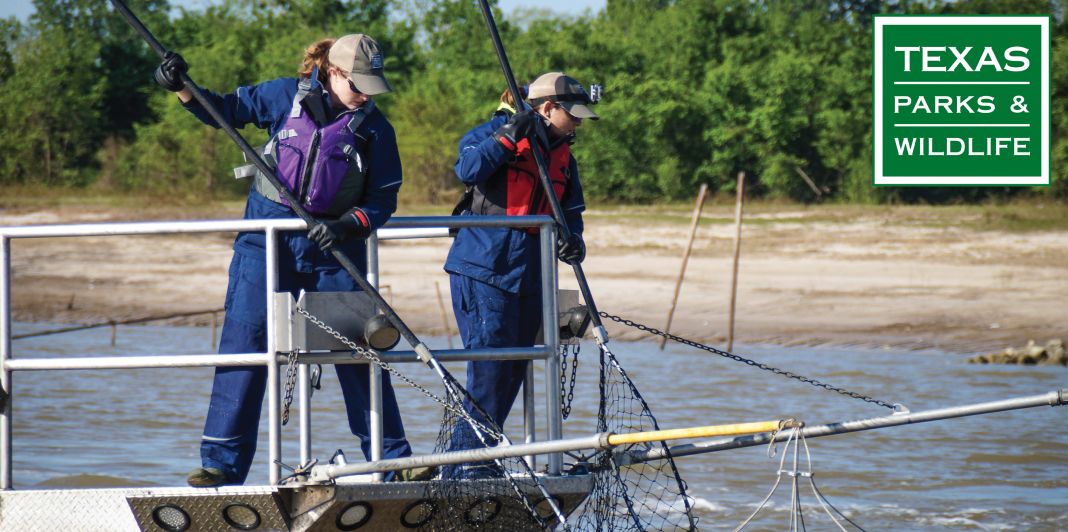Lake Conroe Electrofishing Survey
We survey the Largemouth Bass population in Lake Conroe every two years to monitor fish growth rates, relative abundance, and condition. We use the findings from these surveys to make management decisions like determining stocking rates and improving habitat or food resources. We also use these surveys to monitor other fish species because the rest of fish community influences gamefish like Largemouth Bass and some smaller species—like Bluegill—are fished themselves.
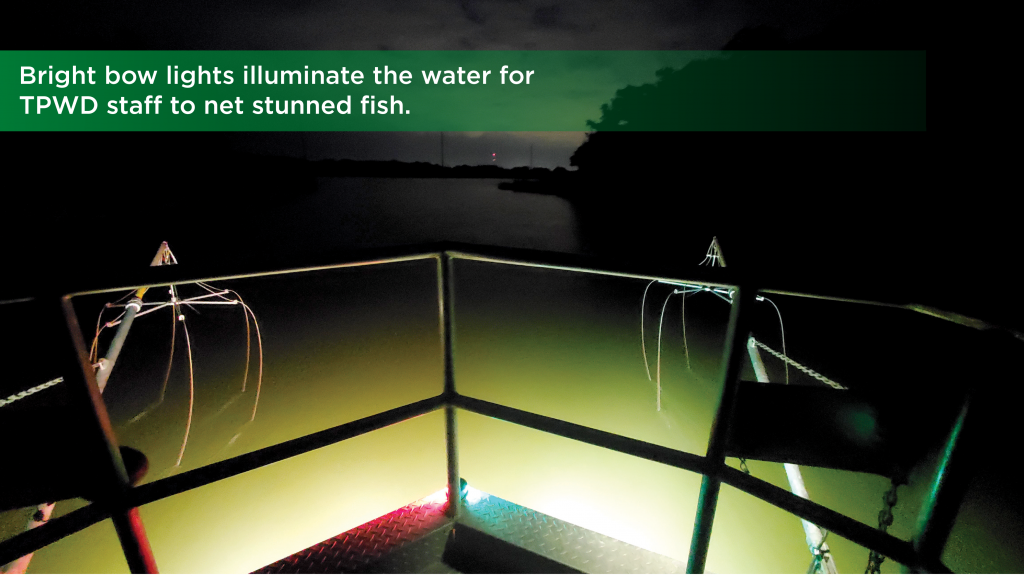 We will spend the rest of the month working up the data we collected during this survey, but in the meantime, here are some photo highlights of our survey. Full survey reports can be found at tpwd.texas.gov/publications/pwdpubs/lake_survey. The next report on Lake Conroe will be published at the end of Summer 2022.
We will spend the rest of the month working up the data we collected during this survey, but in the meantime, here are some photo highlights of our survey. Full survey reports can be found at tpwd.texas.gov/publications/pwdpubs/lake_survey. The next report on Lake Conroe will be published at the end of Summer 2022.


This year we saw a lot of large Bluegill. It’s a lot of fun to see all of the different colors these fish come in!
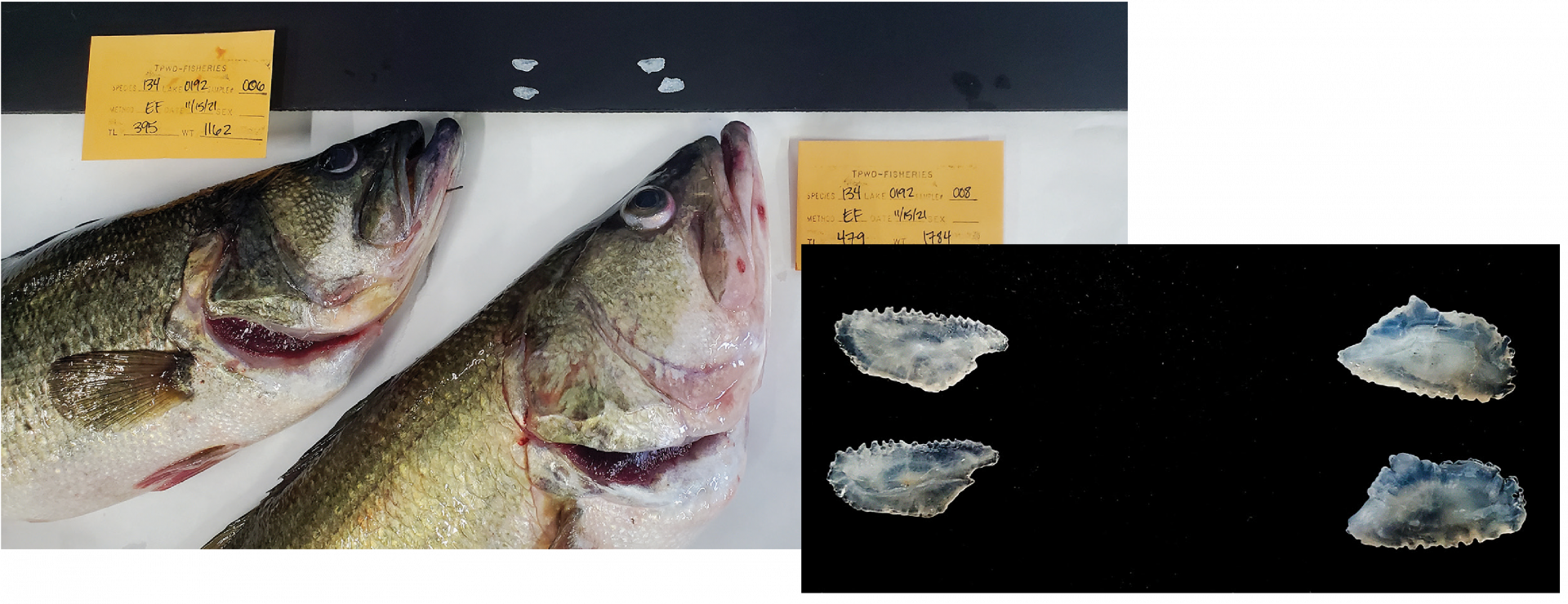
This photo shows two Largemouth Bass from this year’s sample. The one on the left has two annual rings, showing this fish was two years old. At 15 inches, this is excellent growth and exactly what we want to see! The fish on the right is 18 inches but its otholiths are very cloudy and will have to be cross-sectioned, polished, and examined under a microscope to properly age.
Fish have inner ear bones called otoliths that grow annual rings like a tree. Biologists can remove these bones, count the rings, and determine exactly how old the fish is. While this requires killing a limited number of fish, it allows biologists to make sure each year’s spawn is successful and that the fish are growing properly. If something is wrong, biologists can implement measures to improve growth or supplement natural reproduction.
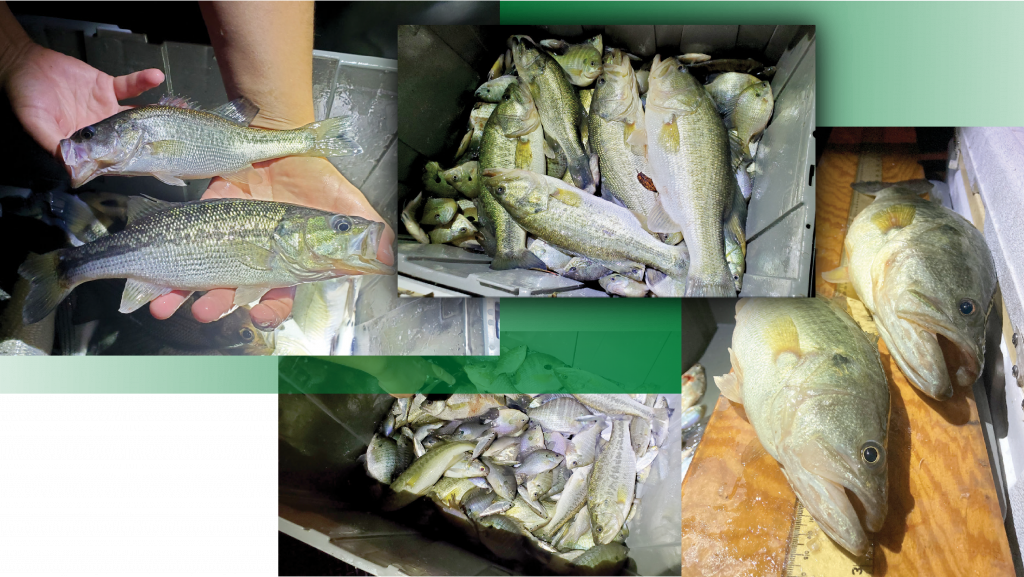
Largemouth Bass are not the only black bass in Lake Conroe! The bottom fish in this photo is a Spotted Bass. Spotted Bass can be differentiated from Largemouth Bass by the lines of fine spots on the belly by the anal fin and by a tooth patch on the tongue, which Largemouth Bass lack.
Largemouth Bass and prey species (primarily sunfishes and shads) are collected from Lake Conroe to monitor the Largemouth Bass fishery. Large Largemouth Bass are released, but a few fish are removed from the lake to determine age and the genetic influence of Florida Largemouth Bass.
Monitoring the health, condition, relative abundance, growth rates, and size of Largemouth Bass is the primary goal the electrofishing survey.
During an electrofishing survey we collect all the fish we can during a 5-minute station. All fish are weighed, measured, and recorded. In this station we saw Largemouth Bass, Bluegill, Longear Sunfish, Inland Silversides, Threadfin Shad, Gizzard Shad, and Bullhead Minnow.
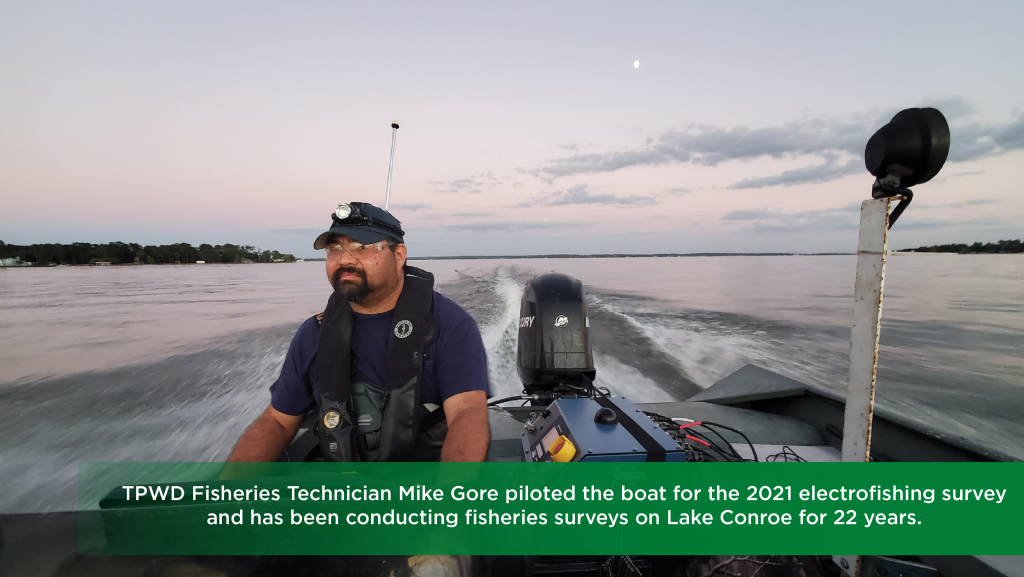
Spotted Bass can be told apart by the tooth patch on their tongue. The fish on the right in the photo is a Spotted Bass with a tooth patch visible as a brown spot on the tongue. The fish on the left is a Largemouth Bass and lacks a tooth patch on the tongue.
Catfish are surveyed separately in the spring. This Blue Catfish was considered bycatch (an accidental and unintentional catch) and was released alive. We saw several Blue and Channel Catfishes and all of them had full, bulging bellies from a good dinner of shad.
Spotted Suckers are native species in the minnow family that eat invertebrates like insects and worms from the bottom of the lake. We occasionally see them in Lake Conroe.
If you want to know more about this fall’s Largemouth Bass survey on Lake Conroe and see more photos, check out our Facebook page at
www.facebook.com/TPWInlandFisheriesCollegeStationHouston.
Or, if you have any other questions about fishing or fisheries management, please contact us at 979-272-1430 or by email at [email protected] or [email protected].


